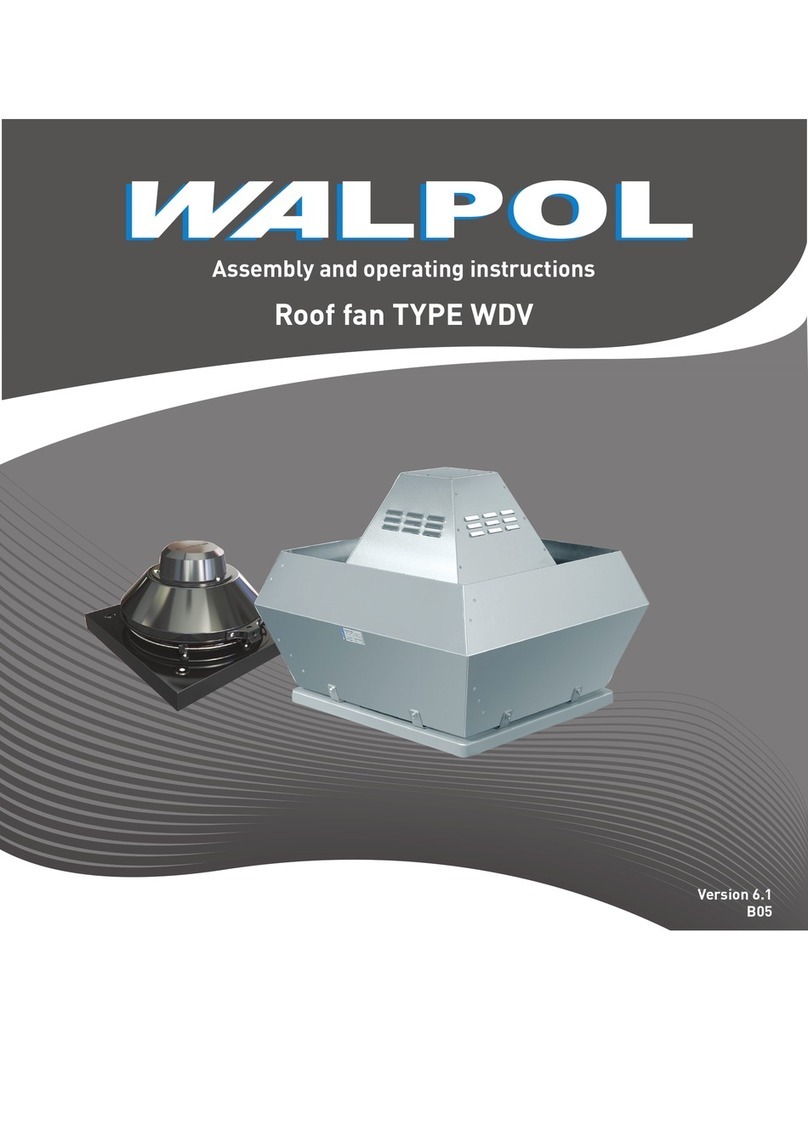
5
Warning: Suspended loads
• When carrying out any work in the vicinity of the fan, wear protective equipment, see 2.2 Personal protective
equipment,
• Never step under a suspended load.
• Ensure that no one is under a suspended load.
Delivery
Each fan leaves our factory in perfect electrical and mechanical condition. It is recommended that the fan is transported to
the installation site in its original packaging.
Check delivery
• Check the packaging for transport damage. Any damage must be noted in the cargo manifest.
• Check that the delivery is complete.
Unpacking
Warning
When removing the transport packaging, there is a risk of damage from sharp edges, nails, staples, splinters, etc.
• Unpack the fan carefully.
• Check the fan for obvious transport damage.
• Do not remove the packaging until shortly before installation.
• Wear protective equipment for any work in the vicinity of the fan, see . Personal protective equipment
Transport
Safety instructions
• The fan must never be carried by the connection cable, terminal box, impeller, guard grille, inlet connection or
silencer.
• In the case of open transport, ensure that no water can penetrate the motor or other sensitive components.
• It is recommended that the fan be transported to the installation site in its original packaging.
Caution: Careless loading or unloading may cause damage to the fan.
• Carry out loading or unloading carefully.
• Use lifting equipment designed for the load.
• Observe the transport arrows on the packaging.
• The packaging is only used as transport protection and must not be used for lifting.
Storage
• Store the fan in the original packaging in a dry, dust-free place protected from the weather.
• Avoid exposure to extreme heat or cold.
Important
Danger from loss of function of the motor bearing
• Avoid excessively long storage periods (recommendation: max. year).
• Before installation, check that the motor bearing is functioning correctly.
5. Description
5.1. GB, GBG and GBV with EC motor
The fans are driven by EC motors. The fans must be controlled with a potentiometer (0-10V). All motors are suitable for
50/60 Hz. The input voltage for single-phase units is in the range 200V and 277V, for three-phase units the input voltage is
380 and 480V.
The maximum fluid temperature is +120°C.
Note
When installing EC motors, ensure that RCDs of type class: B or B+ are present in the circuit.




























